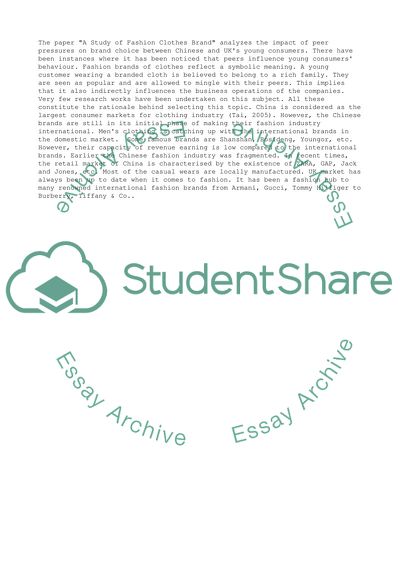Cite this document
(“A Study of Fashion Clothes Brand Essay Example | Topics and Well Written Essays - 1750 words”, n.d.)
A Study of Fashion Clothes Brand Essay Example | Topics and Well Written Essays - 1750 words. Retrieved from https://studentshare.org/business/1699965-a-study-of-fashion-clothes-brand
A Study of Fashion Clothes Brand Essay Example | Topics and Well Written Essays - 1750 words. Retrieved from https://studentshare.org/business/1699965-a-study-of-fashion-clothes-brand
(A Study of Fashion Clothes Brand Essay Example | Topics and Well Written Essays - 1750 Words)
A Study of Fashion Clothes Brand Essay Example | Topics and Well Written Essays - 1750 Words. https://studentshare.org/business/1699965-a-study-of-fashion-clothes-brand.
A Study of Fashion Clothes Brand Essay Example | Topics and Well Written Essays - 1750 Words. https://studentshare.org/business/1699965-a-study-of-fashion-clothes-brand.
“A Study of Fashion Clothes Brand Essay Example | Topics and Well Written Essays - 1750 Words”, n.d. https://studentshare.org/business/1699965-a-study-of-fashion-clothes-brand.


